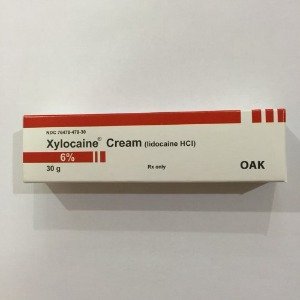 Cosmetic, medical and many other procedures require a long and high-quality anesthesia, while the prices of pharmaceuticals and other anesthetics are increasing every day, thereby increasing the cost of procedures and your overall costs. If you want to save or you are not satisfied with an anesthetic that you use ask your health care provider about the medication Xylocaine. This medication perfectly copes with the task set before it — elimination of any sensations in a certain site of a body, thereby saving you from a pain while undergoing various procedures and from feelings of fear and nervousness before a pain that sometimes is the biggest problem.
Cosmetic, medical and many other procedures require a long and high-quality anesthesia, while the prices of pharmaceuticals and other anesthetics are increasing every day, thereby increasing the cost of procedures and your overall costs. If you want to save or you are not satisfied with an anesthetic that you use ask your health care provider about the medication Xylocaine. This medication perfectly copes with the task set before it — elimination of any sensations in a certain site of a body, thereby saving you from a pain while undergoing various procedures and from feelings of fear and nervousness before a pain that sometimes is the biggest problem.
Xylocaine gel is an excellent alternative to other similar products for local anesthesia at a very attractive price and excellent quality.
Compared to other medicinal products for local anesthesia, Xylocaine guarantees stronger and more prolonged anesthesia and is consumed very sparingly, so this ointment is, among other things, an excellent remedy for people with low incomes or just economical people. It is very simple in use, has a rather thick consistency and is easily washed off.
Due to the balanced composition of active substances, Xylocaine 2% and Xylocaine 5% do not cause irritation, itching, and allergic reactions and is suitable for sensitive skin. It possesses a very gentle mechanism of action. The main ingredient of this medication is lidocaine, perhaps the most famous and popular anesthetic on the planet. The use of Xylocaine can significantly reduce the cost and improve the comfort of the most painful treatments: mesotherapy, bio-revitalisation, contour plastic, plasma face lift, depilation, thread facelift, laser therapy, tattoo, permanent makeup, eyebrow microblading, dermabrasion, and others.
How does Xylocaine work? The action of this medication is easy to understand: it blocks the pain signal from nerve endings in the skin. After applying to the treated area of the skin, a slight tingling sensation is felt for several minutes. After a very short time, this discomforting sensation disappears and the patient does not feel anything at all.
Most often Xylocaine ointment is used in cosmetology for anesthesia procedures:
- Epilation
- Mesotherapy, plasma face lifting, microneedling, microneedle derma-roller Therapy
- Thread facelift
- Biorevitalization, contour plastics
- Permanent make-up, tattooing
- Medium grade face peeling, etc.
In addition, this medicine often helps to ease such painful procedures as dental surgical intervention, other surgical operations and even during childbirth. A wide range of uses makes this medicine extremely popular. Therefore, it can be bought in almost all traditional drugstores or in any international online pharmacy.
Suitable for application to the skin area:
- Skin of the face, lips, eyebrows, arms, legs
- Places for depilation and epilation
Method of application of anesthetic Xylocaine:
Apply the required amount of gel with a layer of 2-3mm thick on dry and clean skin, and evenly distribute, the cream layer should not be too thin. Cover it up with an occlusive bandage (polyethylene wrap). This prevents the drying of the cream and helps it penetrate the skin. Leave the medicine on the skin for an average of 30 minutes — 1 hour or longer, depending on the area of application. Immediately before the procedure, remove the remainder of the cream with a damp sponge. The effect of anesthesia can be assessed by pallor of the skin. To prolong the effect, the wrap can be removed in stages, gradually.
In dentistry, this medicine is used to anesthetize that site where the subsequent injection of anesthesia will be injected. This medication is applied with an interval of 2-3 minutes. For tartar removal, Xylocaine is rubbed into the gingival margin and the neck of the teeth for 2-3 minutes, after that the procedure is performed painlessly.
The main contraindication to the use of this medication is hypersensitivity to its components. With great caution, you can apply it in case of hemorrhoidal bleeding (for rectal examination). Also, it is worth refusing of application of Xylocaine if there is a local infection in the area of application, with trauma of the mucous membrane or skin in the area of application, concomitant acute diseases. Weakened by diseases people, small children, old people, pregnant women, and those who feed their baby with their breast milk should use this ointment only after consulting a health care professional and only if the medical expert deems such treatment safe, acceptable and necessary.
Xylocaine does not contain antibiotics, and other substances that can cause an allergic reaction. Nevertheless, some people suffer from rare allergies. Therefore, you need to know what are the allergic reactions and other Xylocaine side effects: allergic contact dermatitis (hyperemia at the site of application, skin rash, hives, itching), angioedema.
In very rare cases, a person can develop urethritis.
It's almost impossible to overdose on Xylocaine. But nevertheless, the symptoms of this condition are: increased sweating, pale skin, dizziness, headache, blurred vision, ringing in the ears, decreased blood pressure, bradycardia, arrhythmia, drowsiness, chills, numbness, tremor, anxiety, agitation, convulsions , methemoglobinemia, cardiac arrest.
In case you feel unwell after applying this local anesthetic, contact your health care provider immediately, tell him what happened and follow his instructions.